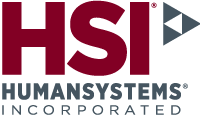Training is an essential part of everyday life. From the day we are born, to our first day of school, first job, and current job, we have received training at every step. In today’s fast-paced environment companies have recognized the need to keep their employees trained. That is why in 2015, $365 billion was spent on training worldwide. In fact, the average employee receives roughly 30 hours of learning per year. That’s almost an entire workweek spent on learning and training to improve performance.
You probably know most of that already. At school, you were taught to solve problems, while at work you were taught how to perform tasks a certain way, so you know the ins and outs of training. So why is it that it is primarily at school that we are truly tested on our learning or training and gradually progress to harder courses, with more testing, to evolve our intellect? Why is it that most of training in the workplace goes unmeasured? Is it not important that the effectiveness of training completed at work is measured as well? If notthen, why do it?
The companies who train more, perform better
Companies with the largest investment in training have been proven to outperform their competition by roughly 17-35% on the S&P index.
Having employees knowing the right skills and how to use them of course leads to a more successful role in the company, and a more successful company. Failing to capitalize on a company training program however can lead to less retention, and higher overall retraining costs. By incorporating a training effectiveness program, problems can be caught early, adjustments can be made, and higher ROI’s can be realized.
Very few companies measure their training’s effectiveness…
With billions being spent on training every year, less than 5% of that is spent on measuring the actual effectiveness of the training.
Training evaluation may come as an afterthought because once the training is delivered, it may feel that the primary objective (i.e., to train employees) has been accomplished – a belief that could sabotage the training program’s goal if not caught in time. However, much like taking a course of antibiotics, training success depends on completing all the recommended interventions rather than abandoning treatment once the initial symptoms have passed.
Don’t spend money on training without testing its effectiveness
Spending money on training only to get a minimal or poor return will just mean having to spend more money down the road. If your training programs are continuously monitored and evaluated, you can identify problems early and then impose corrective action before too much time and effort is wasted. The results from measuring training effectiveness can help to further refine and target your future training efforts. Focusing on area’s that are most in need will help to ensure resources are being used to their greatest advantage.
Looking to learn more about measuring training effectiveness, contact us here
For businesses everywhere looking to capitalize on their training investments, HSI® optimizes your training investment by ensuring the training you provide is effective. While most training companies focus on training delivery very few measure whether or not the training was effective. Our experienced staff provide an analytical approach to your entire training program by determining your training needs, developing your training programs, and by measuring the effectiveness of the training. In turn this leads to higher retention rates and a more prepared and effective organization.




